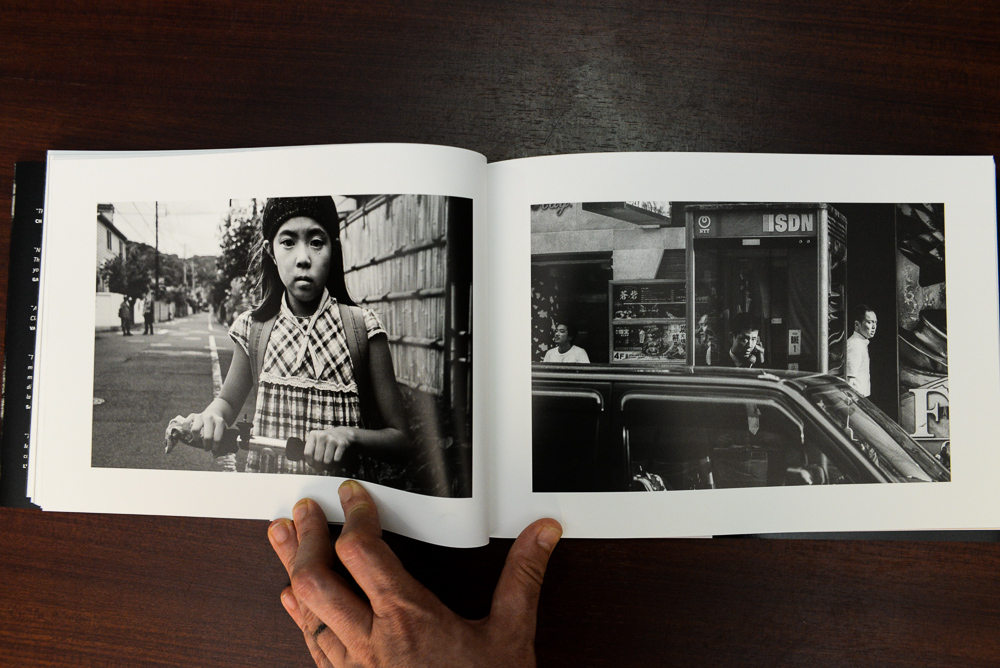Nuno Moreira - State of Mind
I am going to start this by making something perfectly clear... I am a little biased about this style of black and white photography. That gritty grainy feel to some of the images, the high contrast look in others. The tonal ranges are very pleasing to my eye.
Housekeeping first... The book is printed on really nice quality paper. It is presented in a glossy soft cover and the first edition was printed in 2013 in Japan, and is limited to just 500 copies. There is no page numbers so I am unsure how many images are in the book, but the image size on the page is great, with really high quality print quality finishing off the premium feel.
Although the book is available in a few select stores online now, I purchased my copy direct from Nuno (and due to this I was able to ask for it to be signed, Im a lucky boy!). I must say, the communication was a great start, Nuno even asked me for some feedback and a review at some point once I had spent enough time with the book to write something meaningful.
I didn’t expect at the time that I would be penning the review for Art Photo Feature Magazine, but this post was originally written for the magazine and will be in the next issue. It's funny how these things work out.
I must agree with Nuno, this is a book that has some hidden secrets. Each time you pick it up, there is something new that you’re able to learn. Maybe the readers learn a little about Nuno himself, and maybe a little about his subjects, and maybe as we shall see, just a little about themselves as well.
There is feeling and emotion in the pages and it’s not something that you are able to appreciate on first viewing. This to me is a good sign.
Some of the hidden findings are in single images themselves, but it’s the sequencing and shot selection that has drawn my back for the subsequent viewings of the book. The images, and the shadows that they so often have lurking within, create a sense of change and movement in the pages.
Nuno opens the book with a brief written introduction in English that tells a little about how he started the project. The book was created over a period of 4 years. It was also shot in a number of different locations, which is ever present when viewing the images in sequence.
There is a feeling of change; Nuno himself makes a statement in his intro about the fact that he sees the “transitory” nature of the world in these pictures. I don’t know if this would have been as present if the series was not shot in very diverse and different cultural locations.
State of Mind has that ability to share with the reader stories about the subjects and their involvement in the pages, as well as an insight into Nuno himself. This is evident when confronted with some of the images that don’t contain human figures. These images are the ones that show me most the place where Nunos eyes were drawn to, places that he felt a need to share in his book, even lacking a human subject.
I own quite a few photo books, and it’s quite unique to see a project that spans cultures like this. So many books are about a small confined space or specific population of people that the artist has tried to document.
In State of Mind Nuno has gone against the grain in some respects, and taken on a task that to my mind is a lot more challenging. Nuno has created a set of images that combine and gel with each other, delivering the message that he set out to convey through his lens. Being able to bring together images from these locations, but still maintain a sense of coherence in the book was an impressive task.
As far as single images in the book go, the image above is a clear stand out for me. The light on the man’s face and the expression of expectancy from the subject for some reason don’t match the man’s appearance. It’s this play on one’s human nature to generalise that really strikes me in this image.
There are a number of really well presented double image sequences in the book as well. The two images below are a great example of this. They seem to have a connection, and this is further enhanced by their placement on opposing pages.
It’s the forlorn and lonely feeling that is created by the female on the left page, standing in a ridged manner holding a smoke in her hand. When paired with the solitary subject on the right, sitting and facing a blank wall, it seems these two people were meant for each other, meant to help each other in some way.
Their placement in the pages of State of Mind seems to be yelling out for them to come together and solve each other’s problems. Nuno’s ability to pair images like this in the pages of the book is seen time and time again. It’s the fact that these placements are able to be made, and still fit with the overall ebb and flow of the complete set that is so impressive.
I will leave you with a final set of images showing an ability to catch the emotion in his subjects. I feel there are a select few images in the book that jump off the pages for the simple reason that it is clear and evident that Nuno has been seen by the subjects, But he has been able to catch the moment in time right before they realise that Nuno’s making a picture of them. Right before their expression, and that moment, are gone forever.
Putting aside the technical qualities of the image of the girl on the left that result in wonderful tonal ranges and an expert placement of the subject, the simple and innocent moment that has been conserved here is just wonderful.
The book is full of these little surprises. Just when you feel that there is a bit of a lull in the images, a subject like this jumps out of the next page and takes you by surprise. Its this emotional ride that the book takes you on that I will state as one of the defining reasons for you to run out and buy this one. Maybe the State of Mind of the reader is as much at play in the pages of Nunos book as that of his own, and of his subjects.
Nuno still has copies of the book available, and if you would like to grab one then you can do so at the following link http://nmphotos.org/publications.html






